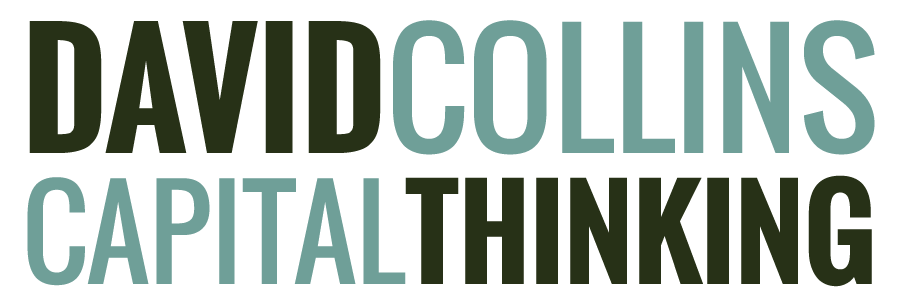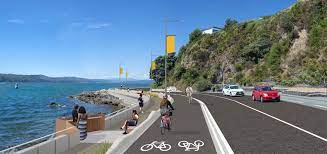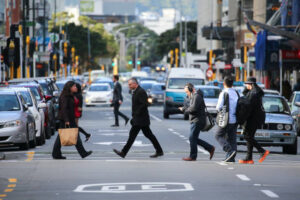Wellington City Council (WCC) recently announced a 10 year expenditure programme. This included $226m for cycleways, an increase of $104m on the original budget. This also includes $14m to fix the Island Bay cycleway that originally cost $3m. That is now $17m on one cycleway that so far, has been deemed a failure.
In the Listener (22-28 May 2021), Alan Bollard, Chairman of the New Zealand Infrastructure Committee, wrote:
“Central government has business-case guidelines to ensure that new investment goes to the most urgent uses at the best price, but there are risks. The proposed ‘Northern Pathway’ Auckland Harbour Bridge cycleway project has been forecast to cost many times its initial capital cost estimate of $67 million. It will move less than 1% of the existing bridge traffic while subsidising some of the wealthiest suburbs in the country. The arithmetic does not stack up”. (Note: the government has subsequently announced a cost of $684 million – Judith Collins in parliament quoted $785million for a cycleway – walkway bridge across the Auckland Harbour, so the arithmetic gets worse).
What does this have to do with Wellington? My question is, has a cost benefit analysis been done on building the proposed Wellington cycleways? Is the additional $14m for the failed Island Bay cycleway justified, for example? Taking Alan Bollard’s comments and transferring that to Island Bay, probably not, considering $3m has already been spent on this failed project.
Then there is the question of why the budget for cycleways was raised from $122m over 10 years to $226m? Heather Du Plessis-Allan on Radio Talk Back (27 May 2021), asked Diane Calvert why the $104m increase in cycleway expenditure was added in when we have major water, sewage and housing problems in Wellington. Diane Calvert initially tried to evade the question, but eventually admitted that the council voted in favour of the increase due to the “personal agendas of some of the councillors”. In other words, it had nothing to do with good governance or the need to deal with Wellington’s real problems.
Diane Calvert was quoted in the Dominion Post (28 May 2021), questioning the “decision to invest more in cycleways over water or housing infrastructure”, while in the same article, Nicola Young was concerned about the financial viability, adding “there are some really good things in the long-term plan, but there are some other things that are, to use the technical term, batshit”.
Barry Soper on Radio Talk (28 May 2021), informed listeners that rate payers had overwhelmingly voted against this increase. Therefore, due to ideological beliefs, self-interest and personal agendas, WCC have ignored the wishes of Wellingtonians.
Central Wellington has a population of 215,000 (greater Wellington has 487,000). Assuming 10% of central Wellingtonians bike regularly (excluding those like me who bike once a year), that is 21,500 people and that equates to $226m over 10 years for 10% who cycle regularly. That is a lot of money for a small percentage of the central Wellington population.
Therefore, a small, radical percentage of the population has been catered for. What about the other 90% who want to get around other than on a bike, who want to take the kids to weekends sports, or want to shop and go to work during the week, or who want to travel across the city to see friends and family?
What about the elderly who want to bus to the city, but the bus dos not turn up? (my 95-year-old neighbour had his buses to town and home cancelled, forcing him to catch a taxi). What about providing for the disabled who are not able to ride bikes? What about our water supply? Yes, $2.7b has been allocated for this, but is this enough? What are our contingency plans for overruns on water supply, and dare I say it, cycleways? Nothing has been set aside for cars which remain our main mode of transport. The majority of the council dislikes cars and believes they must be removed from the city, forgetting that a) they are currently the most efficient form of transport, and b) you cannot take the kids efficiently to sport or do your weeks shopping at the supermarket on a bike, or in all practicality, take the kids on a bike to visit your elderly parents across the other side of town, or to the Hutt Valley, for example. But you can buy a lot of expensive e-bikes for the whole family! This focus on bikes (and buses), while idealistic, is not very practical in a many ways. This ideology and desire to focus on bikes is coming with a hefty price tag.
In summary, my complaint is not about bikes or catering for them, but what assessment has been made in terms of cost; what is the justification and whether a cost benefit analysis has ever been done; what will the impact on the city be in terms of the economy; and what is the economic benefit (other than climate change) of removing cars from the streets of Wellington and replacing them with bikes? How was $226m of expenditure calculated in terms of these issues? As Alan Bollard put it:
“For local government, the challenges vary, but in many cases our small, decentralised councils, with tiny numbers of ratepayers struggle to follow best practice in infrastructure procurement and management” (Listener 22-28 May 2021).


